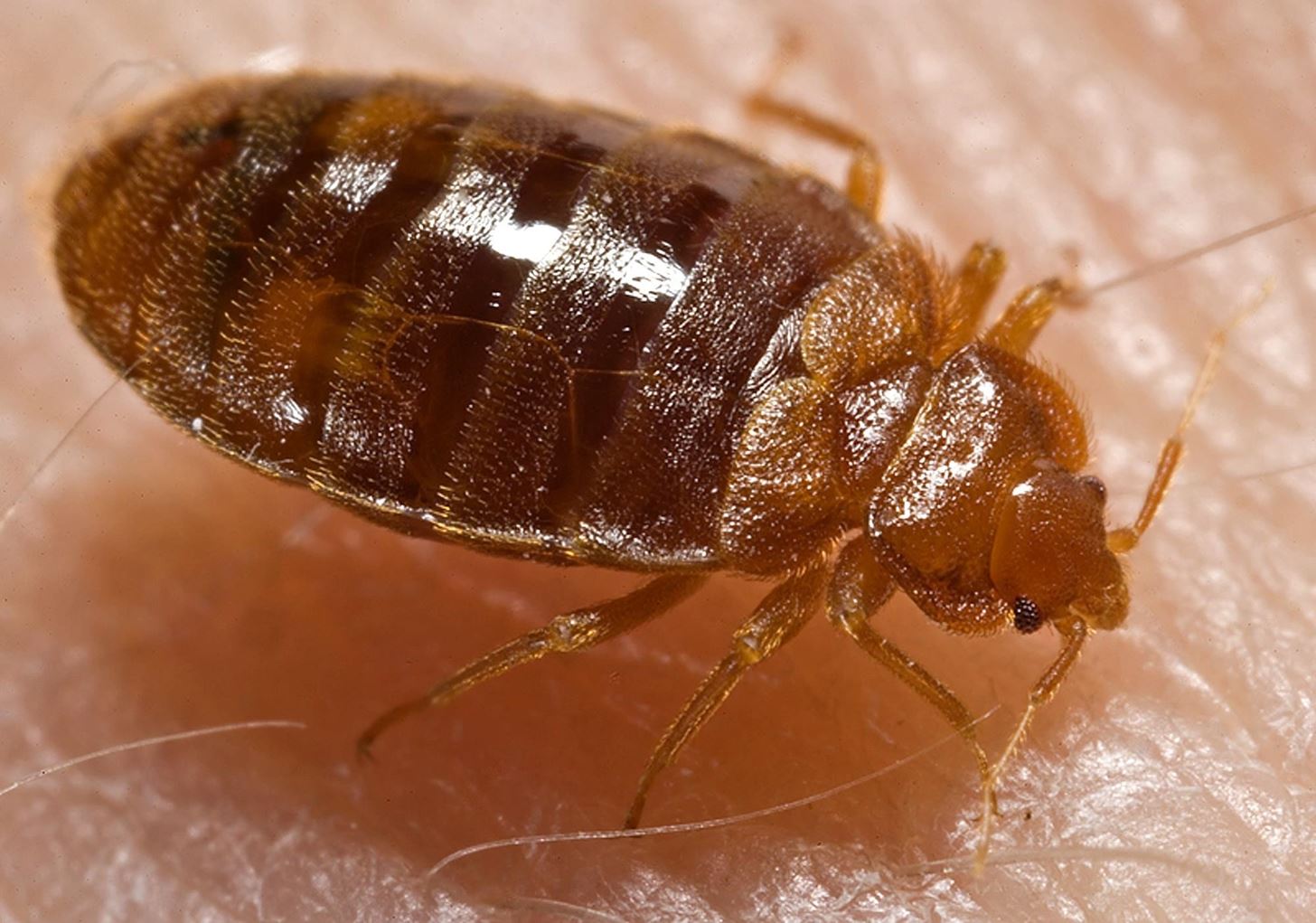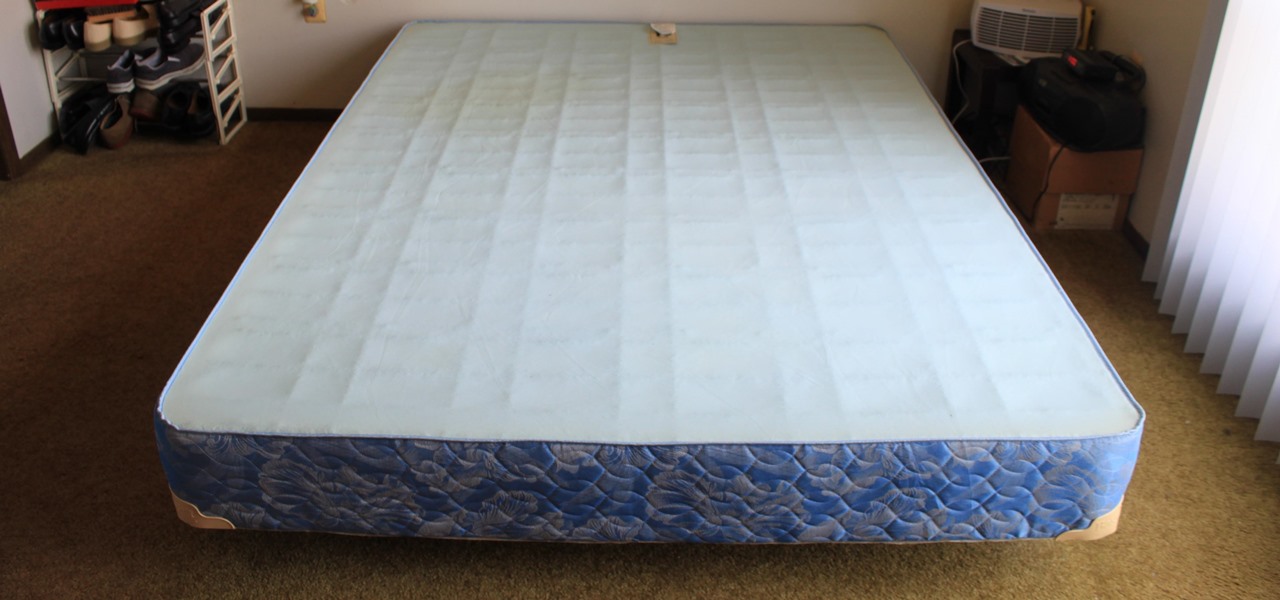Bed bugs are parasites not yet known to spread disease — but they cause plenty of irritation. As scientists and landlords search for new ways to deal with the pests, a new study examines how we can deter bed bugs without so many chemicals.
While they don't infect us with anything dangerous, bed bugs are gross, and their bite makes us itch. Although bed bugs have accompanied humans since the dawn of time, most people think it is about time to find a way to get rid of them — or at least find a way to keep them out of our homes.

Common around the world, bed bug populations increase in crowded conditions, and they are happy to hitch a ride in your clothes and luggage when you travel. You may encounter them in your apartment, a friend's couch or dorm room, or even a fine hotel or theater that would never breathe a word that they have a bed bug problem.
Bed bugs, or Cimex lectularius, are flat, brownish, and about ¼" in length as adults, about the size of an apple seed. Bed bugs are parasites that feed on blood, like ticks and mosquitoes. Like ticks, they expand when engorged with a blood meal. Because they don't fly, they stay in the general vicinity of their birth — scuttling into dark tight spaces in daylight, where we can't see them.
Bed bugs hide in bedrooms, around the edges and seams of mattresses and box springs, and in cracks in headboards, bedside stands, and walls. In severe infestations, they can be everywhere — under scrappy wallpaper, in drawers, hiding in curtains, on baseboards, or around electrical outlets.
How Do You Know if You Have Bed Bugs
Chances are good you probably know if you have bed bugs. You may see one on your sheets, your carpet, or you could suffer bites. The Environmental Protection Agency (EPA) points out that it is better to identify bed bugs from the actual bug, or its residue, than from a bite mark — which could be from other bugs, mosquitoes, or a dermatological condition.
Bed bug evidence includes:
- Seeing the rotten critters for yourself.
- Small reddish stains on sheets, curtains, or floor, from the explosion of a blood-filled an engorged bed bug.
- Pinpoint dots of a dark, reddish color, which are bed bug feces.
- Mesh-like eggshells, or eggs, or translucent young bed bugs called nymphs.
While they don't spread disease, they can cause allergic reactions and psychological and economic distress — no one wants to be in a bedbug-infested space. High density and rented units are more likely to become infested.
To address the problem, consumers, property managers, and pest management professionals have relied on pesticides to control bed bug populations — enabling the parasites to become increasingly resistant to chemicals.
While some research focuses on developing new biopesticides, a study published in the Journal of Integrated Pest Management, analyzed pest management processes to understand what methods could deter or eliminate bed bugs, without such heavy reliance on pesticides.

What Can You Do About Bed Bugs?
Looking for an alternative to the more common strategy of pesticide application, a team from universities in New Mexico, California, Arizona, Hawaii, and Colorado evaluated integrated pest management techniques that might replace, or eliminate, heavy use of pesticides. A pesticide-only strategy against bed bugs can be expensive, potentially poisonous, and increase — rather than reduce — overall problems with bed bugs.
Integrated pest management (IPM) are practices that include different approaches to control or eliminate a pest. For example, with bed bugs, chemical (pesticides), mechanical (vacuuming), and physical (steaming or decluttering and cleaning) are all more effective as an integrated process, rather than any one method alone.
For all you do-it-your-selfers, so-called "bug bombs" and foggers are found to be "largely ineffective against bed bugs," the researchers write, and human exposure to pesticides is better avoided or diminished. Here are tools and methods highlighted in the research:
- Dogs can be trained to detect the odor of bed bugs with varying rates of effectiveness.
- Using "interceptors" helps residents determine if they have a bed bug problem. Interceptors are pitfall type traps placed under furniture and bed legs. Bed bugs attempting to reach sleeping humans fall in the traps. There are no pesticides; the trays are just traps. The research notes that "mass trap placement may reduce the number of insecticide applications made in lightly infested places."
- The number of interceptors, and the time for them to catch bed bugs, can be reduced if you use the interceptors in conjunction with other techniques, including "vacuuming, encasements, heat, or steam vapor." Encasements are mattress and pillow covers that keep bed bugs and mites from moving out of mattresses and box springs, or from settling there in the first place.
- Bed bugs can be killed using "heat, steam, washing and drying clothes and bedding, and freezing."
- Other techniques include clutter management, improvement in overall housekeeping, and use of traps with lures for both detection and removal of small populations of bed bugs.
- One study reviewed by the team showed a relatively high reduction in bed bugs by combining pesticide-laced "dust bands" around furniture legs. The dust bands are covered with Tempo Dust (at greater than label rates), and the bed bugs had to cross the bands to reach the bed — thereby treating themselves with pesticide. The researchers also used interceptors and sprayed Alpine aerosol on any living bed bugs they saw. The treatment resulted in higher bed bug reductions than pesticide alone.
Bed bugs are challenging to eliminate in almost any setting. For crowded, multi-tenant settings, lack of cooperation and clutter can reduce the effectiveness of treatment, allowing bed bugs to persist and spread.
As noted by the research team, an IPM approach to bed bug management takes buy-in from residents, property managers and owners, and pest management contractors. In a large, multi-unit setting, effective bed bug management requires a sustained effort from all parties.
Lead author Alvaro Romero, of New Mexico State University, notes in a press release: "Although proactive IPM approaches for bed bugs may initially generate substantial additional costs, these long-term programs may eventually make economic sense as the best ways to effectively manage bed bugs in these challenging environments."
Preventing a Bed Bug Problem
Getting neighbors on board to learn about, and address, bed bugs in an apartment building is a job by itself. From the building owner to residents, everyone can play a part in practices that prevent, reduce, or eliminate bed bugs — but the effort, especially prevention, has to be ongoing.
Tips from the EPA for preventing bed bugs include:
- If you are thinking about buying second-hand furniture, check it thoroughly for bed bugs, or their residue, before bringing the furniture into your house.
- Use high quality, durable encasements for box springs and mattresses.
- Keep your house or apartment clean of clutter to reduce hiding places for bed bugs in and around the bedroom. Vacuum routinely, dispose of the bag or empty the canister in the outgoing trash.
- Caulk or fill cracks and crevices in furniture, walls, electrical sockets, or baseboards to reduce hiding places and movement.
- Install door sweeps on the bottom of the door to reduce bed bug migration into, or out of, your apartment.
- Use shared laundry facilities carefully, keep your laundry in a plastic bag. If you have an infestation, drying infested clothes or blankets in high heat in a dryer kills bed bugs.

When away from home or traveling, consider these points:
- Be careful where you put your purse, briefcase, or luggage. Movie theaters and taxis can have bed bugs.
- While traveling, thoroughly check your hotel room for bed bugs before accepting the room.
- Use the luggage rack instead of putting your luggage on furniture or the bed. Pull up the mattress, and look for cracks and crevices, even on the ceiling, where bed bugs could hide. Bed bugs can drop from above onto sleeping victims. Look behind the headboard and check mattress seams.
Bed bugs are not going away. Preventing bed bugs is the best idea — but if a bed bug is also calling your place "home," consider all your options before reaching for the pesticide.
Just updated your iPhone? You'll find new emoji, enhanced security, podcast transcripts, Apple Cash virtual numbers, and other useful features. There are even new additions hidden within Safari. Find out what's new and changed on your iPhone with the iOS 17.4 update.



























Be the First to Comment
Share Your Thoughts